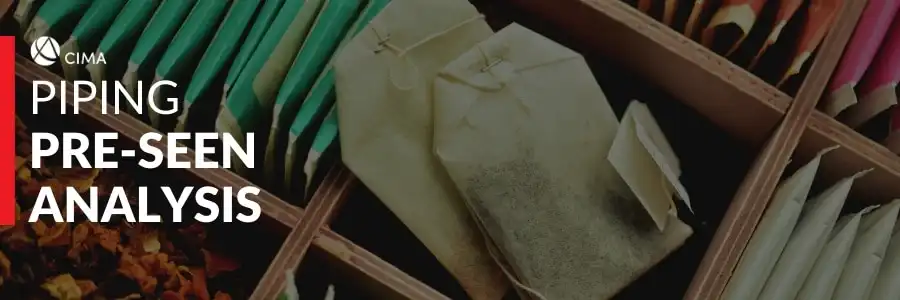CIMA lecturer, Precious Nyamazana, has broken down the Management Case Study Pre-Seen and highlighted some things you should know when preparing for the August Case Study Exam.
Here is what she had to say,
The Management Case Study Exam takes the form of 'a day in the life of the Financial Manager for Piping', therefore, you need to adapt yourself into this role and be able to perform the 5 core activities as indicated in the exam blueprint. These are connected to the “I Can” statements which you need to be familiar with and be able to apply to the Piping business. Be sure to close all of the knowledge gaps.
Case study exam skills can only be mastered through practice, and they require further practice to maintain. Time yourself as you do question practice and get used to sitting and concentrating for 3 hours, as the exam session will require you to do so.
Given that tea is quite a popular drink globally, the Piping pre-seen should therefore be quite easy for you to understand and relate with. Therefore, the examiners will expect a greater level of understanding and performance from you.
About Piping
Piping is a quoted company that was founded over 170 years ago. It is based in Northlandia. Piping’s main business is the manufacturing of packaged tea for sale to retailers. Piping bids for the tea leaves that it uses on the open auction market. Northlandia’s climate is unsuitable for the growth of tea shrubs, and so Piping relies on imported tea leaves. Piping focuses exclusively on black tea and has been Northlandia’s leading tea manufacturer for many years. Piping currently produces only 2 forms of tea: teabags and loose tea, though there are also other forms of tea namely, tea pods and ready-to-drink-tea.
Northlandians prefer teabags to loose tea and Piping manufactures about 360 million teabags every week. Piping’s teas are regarded as premium products that are slightly more expensive than competing brands. Most of the company’s output is sold through retailers in Northlandia, although it also exports tea to other countries.
What’s the Key to Success?
- The key to scoring well is to read and then answer the questions that are asked. Avoid making assumptions or imagining your own question. Relevance and correctness are frequently judged in the context of the scenario, taking into account the nature of the business and the specific issues raised by the trigger.
- The scene setting is that of the company operating on a "business as usual" basis. Assume that there is no Covid-19 pandemic hence no restrictions on the movement of people and goods.
Understanding the Pre-seen Material
To better understand Piping, you need to follow a methodical approach. Among other things, it may be helpful to:
- Perform financial analysis (figures may tell a different story from the narrative given). You will conclude that overall, Piping is financially better than its direct competitor Hottlow, even though they need to tap into new markets and possibly develop new products lest they may be overtaken by Hottlow.
- Develop an understanding of Piping’s business model.
- Review Piping’s Value Chain and establish how value can be added and where costs may be reduced.
- Employ models such as Porter’s Five Forces & PESTLE analysis to establish the operating environment for Piping.
- Establish the current positioning of Piping through SWOT analysis.
- Use Mendelow’s matrix to categorise the key stakeholders for Piping and think about how they can be managed.
- Absorb as much business news as you can and gather information about the challenges facing the tea industry and how these are being addressed.
Key Concepts
Having built a thorough understanding of the pre-seen content, several concepts should spring to mind;
- HR processes and policies that could be in place. Piping has about 900 employees, think about the management style in the company.
- Cost management (the cost of tea leaves alone is 40% of the total cost).
- Sources of finance available to Piping – Debt vs Equity.
- IFRS – R&D costs, Elements of Financial Statements, particularly Intangible Assets.
- Accounting for foreign subsidiaries & foreign transactions (possibility of backward integration).
- Business Intelligence systems and the use of Big Data (digital disruption).
- Risk Management (commodity price risk etc).
- Investment appraisal as there may be triggers on new product development or an acquisition of a tree plantation.
Last Words
It is normal for you to be nervous and feel like you don’t know much but I want to assure you that there is a wealth of knowledge lying inside of you and it only takes a question to trigger it. Create a workable study plan and steadily practice lots of questions under exam conditions.
The fact that you are eligible for this exam is evidence enough that you have succeeded in other exams before and yes, you will succeed once again!!! We wish you the very best in your August Management Level Case Study.







